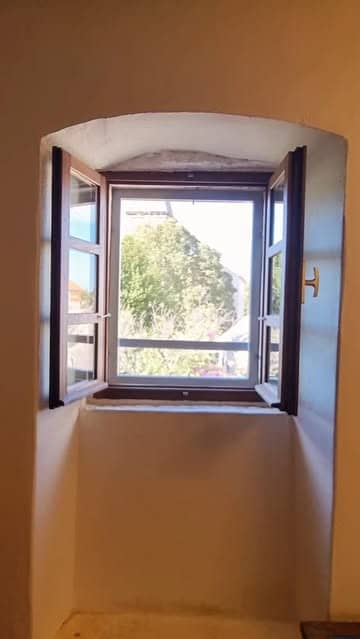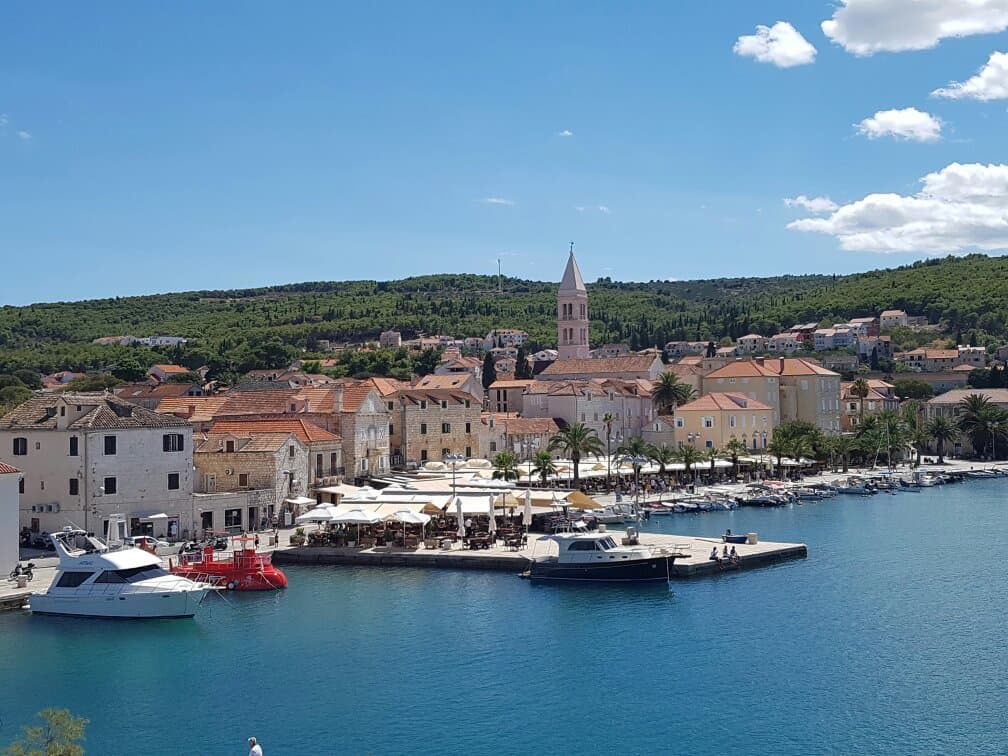Museum of Brač Škrip
Explore Škrip, Brač island's oldest village, with ancient history and breathtaking views. Visit the museum and nearby Olive Oil Museum.
Highlights
Must-see attractions

Social
From TikTok & Reddit
Best Time
Museum opens later.
Museum of Brač Škrip
Best Time
Museum opens later.
Highlights
Must-see attractions
Explore Škrip, Brač island's oldest village, with ancient history and breathtaking views. Visit the museum and nearby Olive Oil Museum.
"The village of Škrip offers a mystical experience with tales of power and faith whispered in ancient stone."
🎯 Confirm Opening Hours
Museum often opens at 3 PM, not 9 AM. Double-check before you go! :clock1:
✨ Explore the Village
Škrip's charm is in its ancient streets and views, not just the museum. :camerawithflash:
Highlights
Discover the most iconic attractions and experiences
Škrip Village Panorama
Škrip Village
Breathtaking views of the valley and surrounding landscape from the island's oldest settlement.
Kastel Cerineo
Škrip Village
Explore this ancient castle, a testament to the island's rich and layered history.
Parish Church of St. Helen of the Cross
Škrip Village
A place of worship with deep spiritual significance, embodying centuries of devotion.
Plans like a pro.
Thinks like you
Planning Your Visit
Timing is Everything
Manage Expectations
Best Times
Insider Tips
from TikTok, Instagram & Reddit
🎯 Confirm Opening Hours
Museum often opens at 3 PM, not 9 AM. Double-check before you go! :clock1:
✨ Explore the Village
Škrip's charm is in its ancient streets and views, not just the museum. :camerawithflash:
🫒 Visit Olive Oil Museum
Often a more rewarding experience next door. :olive:
🗣️ Limited English Info
Exhibits may lack English explanations. Bring a translation app. :iphone:
Tips
from all over the internet
🎯 Confirm Opening Hours
Museum often opens at 3 PM, not 9 AM. Double-check before you go! :clock1:
✨ Explore the Village
Škrip's charm is in its ancient streets and views, not just the museum. :camerawithflash:
🫒 Visit Olive Oil Museum
Often a more rewarding experience next door. :olive:
🗣️ Limited English Info
Exhibits may lack English explanations. Bring a translation app. :iphone:
What Travellers Say
Reviews Summary
Visitors often find the village of Škrip and its panoramic views to be the highlight, with its ancient history and charming atmosphere. However, the Museum of Brač itself is frequently described as disappointing due to a lack of engaging exhibits, poor presentation, and limited multilingual information. Many recommend the adjacent Olive Oil Museum as a more rewarding experience.
"We left dissapointed, might be the worst museum we visited in Croatia in the last few years. Main problem is it lacks in both storytelling and multimedia. Storytelling is nonexistent, multimedia was not working. Lacking in vision and content, very small and uninformative. Here and there you can find A4 papers taped to a wall with random sticky tape that looks like it will fall off anytime now. There is so much potential in Brač's history (various cultures, wars, pirates, shipowners, immigration, etc.), and they show you a random shovel from 20th century. To be fair there are some interesting pictures and stories about sheephearding (from 2015 Night of Museums event). Only thing worth seeing is the Škrip panorama - museum building itself, viewpoint, old castle and church nearby which are all very cool and beautiful."
Iva Smolković
"Most things are from 19th-20th century apart from one room with Roman and Prehistoric remnants. No English speaking guide. The price is 5€ for adults, 3€ for students over 14 years old and 2€ for kids up to 14 years old"
Eros
"Skrip, Brac’s oldest settlement, stretching back approximately 3,000 years, crowns the Island of Brac in Croatia. Its Parish Church of St. Helen of the Cross, Kastel Cerineo, and the Muzej otoka Braca embody its religious, financial, artistic, and cultural heritage..
The island’s history is marked by frequent changes in rulership. Before Roman conquest, Illyrian tribes settled at a safe distance above Brac’s seafronts, where pirates were known to disrupt and destroy vulnerable inhabitants. However, the Illyrians were not always innocent victims as they themselves were often guilty of pillaging and disrupting peace.
After the decline of the Roman Empire, the region experienced various changes: Slavic settlement, periods of Byzantine, Hungarian, Venetian, Austrian/Austro-Hungarian, and French rule during the Napoleonic Wars. In the 20th century, it became part of Yugoslavia, and now, modern Croatia. With the breakup of Yugoslavia in the 1990s, Brac became part of the independent Republic of Croatia, a sensitive topic to this day.
My visit to Skrip was one of the most mystical I've had. The very air whispers tales of power, religion, and unshakeable faith. Though the human ear strains to hear, we must settle into the mystery that abides: our inability to receive the multitude of stories coming in. They arrive as if transmitted from thousands of years all at once, each one canceling out the next.
Historically, humans have built places of worship in spiritually significant locations. Rounding the right side of St. Helen’s church, a wave of awe stole my breath, the weight of 3,000 years of devotion settling upon me. I wondered who those people were, whose strength of faith had created this palpable vortex of spiritual power. The energy of Skrip remains, an enigma trapped in ancient stone. It is a place that leaves one pondering faith's mysteries, and wondering how to tap into this force of enduring faith in the Father, Son, and Holy Spirit."
#truth
What People Like
What People Dislike
Frequently Asked Questions
🚇 🗺️ Getting There
The museum is located in Škrip, the oldest settlement on Brač island. You can reach Škrip by car or scooter, with parking available nearby. Local buses may also serve the area, but schedules can be infrequent.
While buses do run to Brač island, direct and frequent service to Škrip might be limited. Renting a car or scooter is often recommended for easier access and exploration of the island's interior.
Škrip is best explored on foot. Wear comfortable shoes as the village has uneven terrain and charming, narrow streets.
🎫 🎫 Tickets & Entry
The museum's opening hours can be inconsistent. While some sources suggest 9 AM to 7 PM, many visitors report it only opens at 3 PM. It's crucial to confirm the exact opening time on the day of your visit.
Admission fees are typically around 5€ for adults, 3€ for students over 14, and 2€ for children up to 14 years old. Prices may vary.
Advance booking is generally not required for the Museum of Brač Škrip, especially given its smaller size. However, confirming opening hours is more critical than booking tickets.
There is no mention of combined tickets for the Museum of Brač Škrip. However, it is located next to the Škrip Olive Oil Museum, which offers a separate, often more engaging, experience.
🎫 🧭 Onsite Experience
The museum houses a collection of artifacts, including Roman and prehistoric remnants, along with items related to sheep herding and island life. However, many visitors find the exhibits lack depth and engaging storytelling.
English-speaking guides are generally not available at the Museum of Brač Škrip. Information within the museum may be primarily in Croatian, with limited English explanations.
Škrip is the oldest settlement on Brač island, with evidence of life dating back over 3,000 years. It has been inhabited by Illyrians, Romans, and various other rulers throughout history, making it a site of immense historical importance.
Beyond the museum, Škrip offers the Kastel Cerineo, the Parish Church of St. Helen of the Cross, and stunning panoramic views of the island's interior. The village itself is a historical gem.
While children can enter, the museum's limited exhibits and lack of interactive elements might not hold their attention for long. The surrounding village and views might be more engaging for younger visitors.
📸 📸 Photography
The panoramic viewpoints in Škrip village offer incredible photo opportunities. The ancient architecture of Kastel Cerineo and the church also make for picturesque shots.
Photography policies inside the museum can vary. It's advisable to check for signage or ask staff upon entry. However, the main visual appeal of Škrip is often its exterior and surrounding landscape.
For Different Travelers
Tailored advice for your travel style
👨👩👧 Families with Kids
Consider focusing on exploring the historic village, the Kastel Cerineo, and the church, which offer a sense of adventure and history. The nearby Škrip Olive Oil Museum is also generally considered more engaging for families. Pack snacks and water, and be prepared for uneven terrain.
🏛️ History Buffs
While the museum's presentation may be lacking, the historical significance of the site itself is undeniable. The village's ancient stones and strategic hilltop location speak volumes about its past importance. For a more detailed historical context, consider researching Brač's history prior to your visit.
📸 Photographers
Capture the charm of the ancient village streets, the imposing Kastel Cerineo, and the serene Parish Church of St. Helen of the Cross. The contrast between the old stone structures and the vibrant Mediterranean landscape makes for compelling shots. Remember to check the museum's photography policy if you plan to shoot inside.
Deep Dives
In-depth insights and expert knowledge
The Rich History of Škrip and Brač Island
The island's history is a tapestry woven with threads of numerous rulers. Following the Roman conquest, Brač experienced periods under Byzantine, Hungarian, Venetian, Austrian, and French rule. The 20th century saw it become part of Yugoslavia, and now it stands as part of independent Croatia. This complex past has shaped the island's culture and heritage, with Škrip serving as a living testament to these layers of influence.
Within Škrip, key historical sites like the Kastel Cerineo and the Parish Church of St. Helen of the Cross stand as enduring symbols of the island's religious, financial, and artistic heritage. The museum itself aims to showcase remnants from Roman, late Antique, and early Medieval periods, though its current presentation is often criticized for lacking comprehensive storytelling.
Navigating the Museum Experience
Exhibits are described as small and uninformative, with some information presented on A4 papers taped to walls. While there are some interesting items, such as pictures and stories about sheep herding, the collection is predominantly from the 19th and 20th centuries, with only one room dedicated to Roman and prehistoric remnants. The absence of English-speaking guides and limited multilingual explanations further detract from the visitor experience.
For a more consistently rewarding experience, many recommend visiting the adjacent Škrip Olive Oil Museum, which is often cited as offering a more engaging and informative exploration of local traditions.



Social
from TikTok, Instagram & Reddit